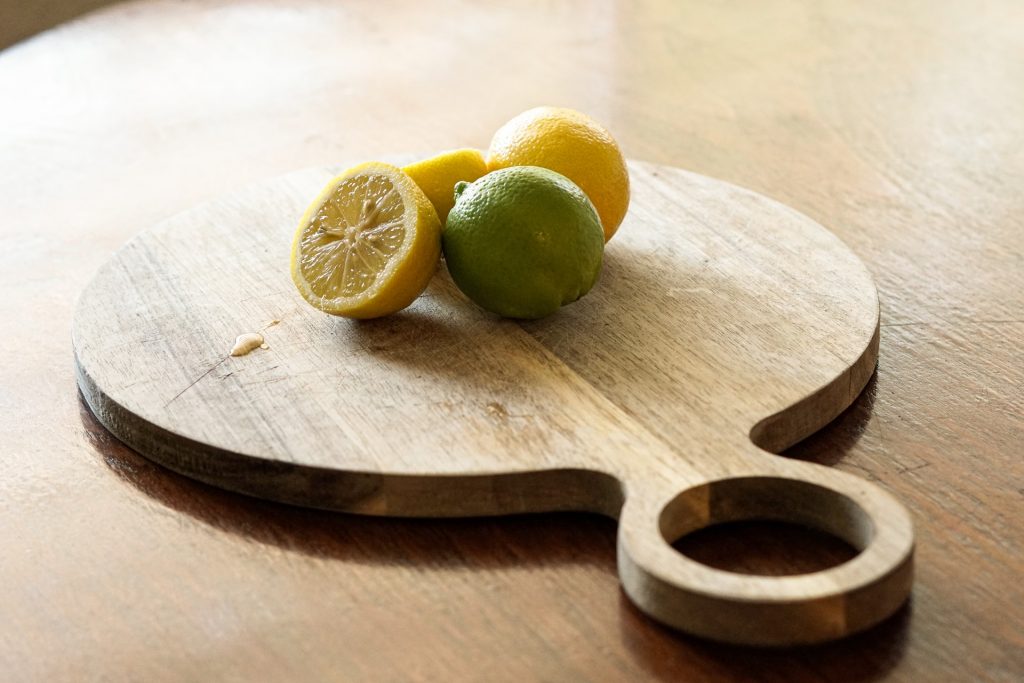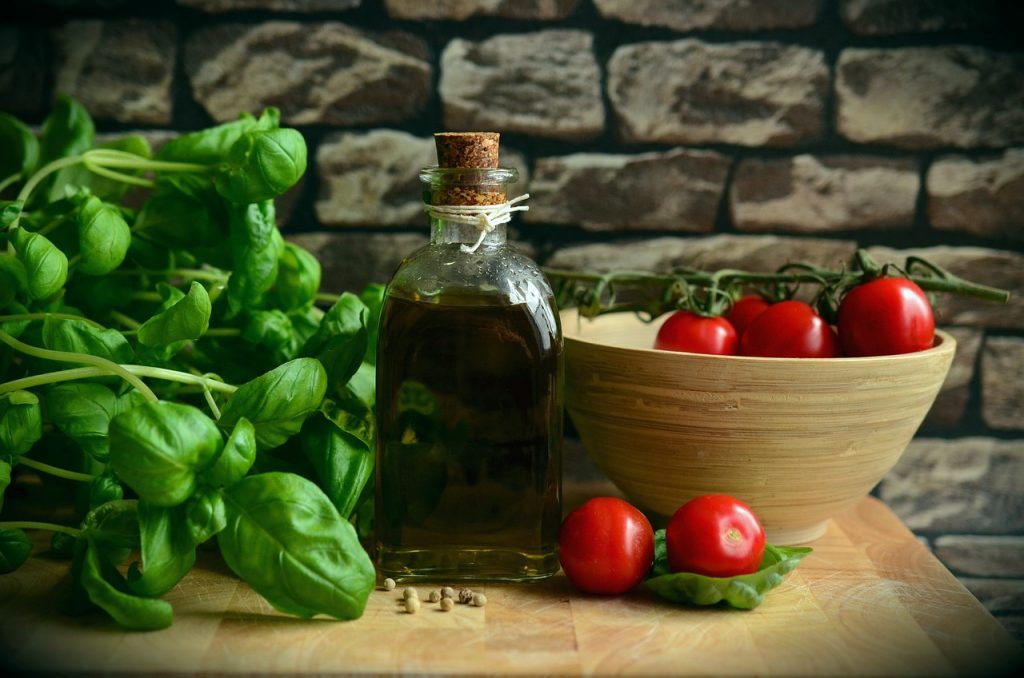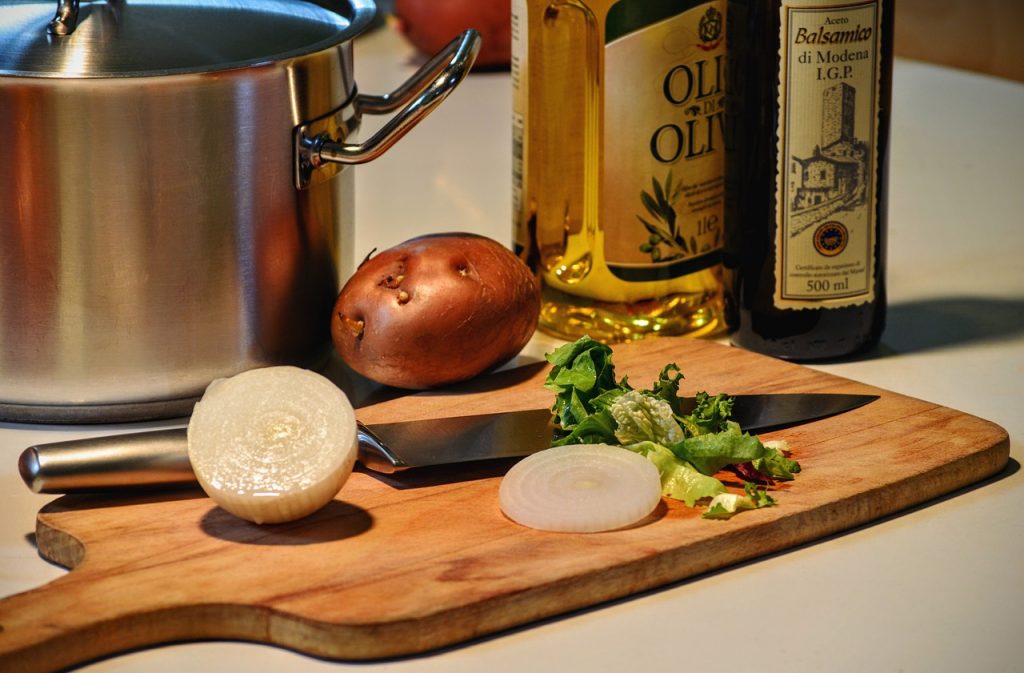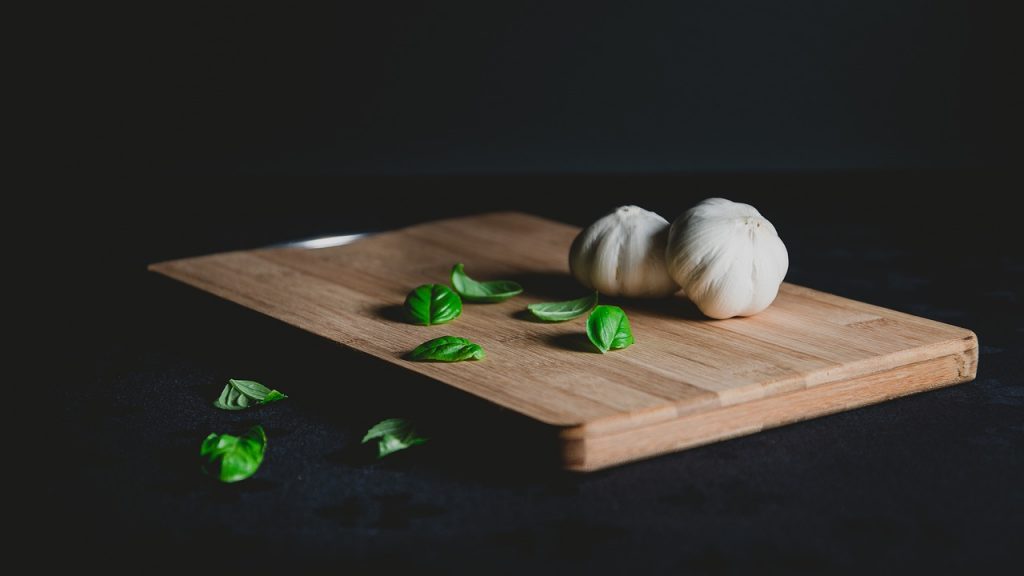Who doesn’t love spending time in the kitchen? Even if you’re not a culinary expert, there’s something about being in the kitchen that just feels relaxing. You know the importance of keeping your work surfaces clean and oiled as a cook. But what about your cutting board? Do you know how to use cutting board oil?
Wooden cutting boards can be a breeding ground for bacteria if not cared for properly. That’s why using cutting board oil is essential. Not only does it keep your board clean and bacteria-free, but it also helps to preserve the wood and keep it looking new. This post will show you six easy ways to use cutting board oil. Read on to learn more!
Why Do You Need to Oil a Cutting Board?

Like most people, you probably don’t think twice about oiling your cutting board. However, did you know that there are several good reasons why you should be oiling your cutting board regularly?
Here are some reasons you need to oil a cutting board.
⭕Prevent Cracks and Splits
One of the main reasons why you need to oil a cutting board is to prevent cracks and splits. Over time, continued use of a cutting board without proper care can cause it to crack and split. By oiling your cutting board regularly, you can prolong its life and prevent cracks and splits from occurring.
⭕Keeps the Wood Healthy
Another reason why you need to oil a cutting board is because it keeps the wood healthy. Like our skin, wood needs to be properly moisturized to stay healthy. You’re keeping the wood hydrated by oiling your cutting board and preventing it from drying out and cracking.
⭕Prevents Stains
Lastly, you need to oil a cutting board because it prevents stains. If you don’t oil your cutting board regularly, it will eventually start to stain. It is because the pores in the wood will become clogged with food debris and dirt. Oiling your cutting board will prevent this from happening and keep your cutting board looking like new.
Type of Oils that are Safe to Use

Now that you know why you need to oil a cutting board let’s talk about what oils are safe. While there are many types of oils, not all are safe for cutting boards. Here are some of the most common oils that are safe for cutting boards.
🤍Mineral Oils
Mineral oil is a petroleum-based substance that is flavorless, odorless, and colorless and is neither poisonous nor drying. The Federal Drug Administration’s definition of food-grade mineral oil makes it a preferred option for wooden kitchenware, including butcher blocks and cutting boards, because of its qualities that resist water absorption.
The important phrase here is “food-safe” since there are varieties of mineral oils that people should not consume and are typically available at auto or hardware shops or used as lubricants for machines.
If unsure how to choose the right mineral oil, “white mineral oil” products are considered safe since they went through some refinement compared to other oils. Always thoroughly read the label if you are unclear about a product’s recommended usage. Of course, purchasing mineral oil, particularly formulated for cutting boards, is the safest option.
Cutting boards won’t shatter if mineral oil is used often to keep them from getting dry and brittle. Oil-treated boards also prevent liquids from permeating them, where bacteria and germs thrive.
🤍Beeswax
Another safe option for oiling your cutting board is beeswax. Beeswax is a natural wax that comes from honeycomb and has antibacterial, antiviral, and antifungal properties. It is more difficult for the wood to absorb beeswax since it is solid. It improves the water resistance of mineral oil when combined with it, while coconut oil, when combined with it, keeps the moisture in.
Beeswax is easy to use and can be melted down and applied directly to the cutting board. It will also leave a nice, natural finish, so your cutting board looks as good as new!
🤍Coconut Oil
Coconut oil is also a safe and natural option for oiling your cutting board. Coconut oil has antibacterial, antifungal, antiviral, and anti-inflammatory properties, making it an excellent choice for wood care. Unlike mineral oils or other synthetic options, wood can easily absorb coconut oil, so you don’t need to use as much of it.
It’s easy to apply coconut oil, simply rub it on the board in a circular motion and then let it sit for about an hour. Coconut oil is also food safe, so you don’t need to worry about any residue left behind after using it.
🤍Lemon Juice
Another option for oiling your cutting board is lemon juice. Lemon juice is a great way to naturally disinfect and deodorize your cutting board. It also has citric acid, which helps loosen any built-up residue on the board.
To use lemon juice, slice a lemon and rub it all over the board’s surface. Let it sit for a few minutes, then rinse with warm water. It will help lift any residue on the board without leaving any harsh chemicals or smells behind.
🤍Carnauba
Adding a coat of carnauba wax to a cutting board is a simple way to create a long-lasting and beautiful finish. It’s natural, safe, and easy to use. It helps protect the board from water, grease, and spills while providing a high gloss. Carnauba wax is a great natural alternative to petroleum distillates, reducing damage to your wood furnishings. You can also use the wax on various surfaces, including furniture, countertops, and flooring.
The wax is a hard substance that provides a glossy finish to various surfaces. It’s also a natural and vegan-friendly alternative to synthetic products. It also gives your wooden cutting board a hard, durable finish resistant to water and stains. You can purchase it in various forms, including flakes, beeswax, and paraffin wax. There are many applications for carnauba wax, including candy coatings, shoes, and woodworking.
Its high melting point makes carnauba wax extremely hard, which helps to protect wood furnishings and enhance their shine. This wax is also hypoallergenic and non-toxic, making it ideal for different surfaces. When you combine it with other waxes, it can create a strong and durable protective surface.
Carnauba wax is easy to apply. Simply rub it on the cutting board’s surface in a circular motion and then let it sit for roughly an hour. It will leave your cutting board looking as good as new!
🤍Baking Soda
Baking soda is a great option for polishing your cutting board. It helps to lift any residue and grease that may have built up on the wood while leaving it with a fresh smell.
To use baking soda, sprinkle some onto the cutting board’s surface and then scrub in circles until you remove all residue. Rinse off with warm water and let dry.
🤍What to Avoid
It’s important to note that you should avoid some products when oiling cutting boards. These include vegetable oils, like olive and sunflower oil, and cooking sprays, which can go rancid over time. Additionally, avoid petroleum-based products such as mineral spirits, as they can damage the wood surface. It’s best to stick to natural oils and waxes to ensure your cutting board stays in top condition.
When and How Often Should You Use Cutting Board Oil
It’s generally advisable that you oil your cutting board once every month or two. If you use your cutting board daily, you may need to oil it more often. Likewise, if your cutting board is made from a denser wood like teak or mahogany, it will require less frequent oiling than a softer wood like pine or maple. When in doubt, err on caution and oil your board more often rather than less.
It’s usually time for an oiling whenever you see it is beginning to seem quite dry and pale. The water test is another method for determining if your cutting board requires lubricating. Add some water to the board. Does it absorb the water? Or does it let water droplets congregate? It’s time for an oiling session if it’s the latter.
No matter how often you use it, make sure to clean your cutting board before applying any oil.
How to Use Cutting Board Oil

A cutting board is a vital kitchen tool. It’s a versatile tool that can be used for slicing meat, chopping vegetables, and even as a makeshift tray for serving food. But like any other tool in your kitchen, a cutting board needs to be properly cared for to keep it looking and performing its best. That’s where cutting board oil comes in.
If you’re not sure how to use cutting board oil, here’s how:
1. Clean the Board
Your cutting board should be well-cleaned with soap and warm water. For washing germs and other food debris off the board, mechanical scrubbing and water volume are more vital than soap. After cleaning, dry the cutting board with a towel before setting it up to dry in the open air or on a high rack.
Don’t place the cutting board in the dishwasher. The heat and water will cause the wood to distort and split and nullify the manufacturer’s warranties. The dishwasher will only accept composite, plastic, or glass cutting boards.
2. Choose your Oil
Now that the cutting board is clean, it’s time to select the right oil. Choose an oil with a high concentration of fatty acids to protect and seal your cutting board. It includes mineral oil, food-grade vegetable oils like almond or walnut oil, coconut oil, and beeswax.
3. Pour the Oil
One side at a time, spread a generous amount of the oil over the board’s surface. While you don’t want the oil to accumulate on your cutting board, you also don’t want to be too generous. Slowly add extra oil if necessary as you go to the following stage.
4. Rub the Oil on the Board
Using a clean cloth or paper towel, lightly rub the oil in circles across the board. Use circular movements so that the wood can absorb the oil more effectively. Take your time to ensure that all sides of the board get a good oil coating. Make sure to go with the grain and not against it for a smoother finish. Include the ridges surrounding the handles and surfaces that come into touch with food.
Wait a little while with the board supported vertically. Your cutting board will be especially dry and need additional coatings if it lasts more than a few months without properly oiling. If so, you may repeat the process once or twice if necessary.
5. Wipe Off Any Excess Oil
Once the board is saturated, get a clean cloth and wipe off any extra oil on top of the wood. Wipe it in the same direction as you did when you rubbed the oil in, or else you may scratch the surface of your cutting board.
6. Store the Board Properly
Finally, ensure that your cutting board is stored in a cool, dry place and stands vertically so the liquid can go down from the surface. Do not store it on its side, as this will cause warping over time. It’s also best to cover it with a cloth or other covering to protect it from moisture and dust.
More Tips to Care for Your Cutting Board

Even if you’re a cook who prefers to use a single knife and cutting board for everything, it’s still important to take care of your wooden cutting board. With proper care, a good cutting board can last for years, even decades.
Here are some extra tips to keep your wood-cutting board looking like new.
➡Avoid letting your cutting board sit in water.
It is especially important for wooden cutting boards, as they can absorb water and warp. If you need to wash your cutting board, dry it thoroughly afterward with a clean dish towel or air dry it by leaning it against the sink.
➡Don’t let your cutting board get too dry.
Just as you wouldn’t want to leave your wood furniture in direct sunlight or next to a heater, you also don’t want your cutting board to get too dried out. Every few months, it’s a good idea to rub some food-grade mineral oil into the surface of your cutting board with a clean cloth. It will help keep the wood hydrated and prevent cracking.
➡Use the right wooden material for your cutting board.
The first step to properly caring for your cutting board is to choose the right material. Wooden boards are beautiful and classic but require more care than their plastic counterparts. Plastic boards are easier to clean and disinfect, but they can damage knives and dull their blades over time. If you opt for a wooden cutting board, make sure it is made of hardwood like maple or cherry—softwoods like pine will scratch and dent more easily.
➡Never put your cutting board in the dishwasher!
The harsh detergents and high temperatures will damage the wood and shorten its lifespan. Instead, wash wooden boards by hand with warm water and mild soap. Plastic boards can go in the dishwasher, but use the gentle cycle and avoid using heat drying if possible.
➡Regularly season it.
Keep your cutting board looking its best by seasoning it regularly. Seasoning helps wooden boards withstand wear and tear and prevents them from absorbing moisture, which can lead to warping. Seasoning also helps reduce staining and gives the wood a beautiful patina that improves with age.
➡Avoid bleach.
Bleach is a powerful cleaning agent, but it can be too abrasive for wooden cutting boards. To sanitize your board, use diluted white vinegar or lemon juice instead. These natural ingredients are just as effective at killing germs but won’t damage the material. You may also want to invest in a food-safe sanitizing spray between washings.
Frequently Asked Questions
What happens if I oil my cutting board too much?
Applying too much oil to your cutting board can lead to surface staining and a greasy feel. To avoid over-oiling, use a light coat of food-grade mineral oil and rub it into the wood with a clean cloth. Once the oil has been absorbed, wipe off any excess to prevent a greasy buildup.
What should I do if my cutting board starts to crack?
Unfortunately, cracks in wooden cutting boards are hard to prevent and repair. If your board is starting to show signs of cracking, it’s best to replace it with a new one. However, if the crack is small enough, you may be able to use the board with care until you get a replacement.
Will oiling my cutting board make it more slippery?
No, oiling your cutting board won’t make it more slippery. The oil helps protect the wood and prevents it from drying out, making the board’s surface feel rougher. Oiling also helps seal any bacteria or germs that the wood might absorb. A well-oiled cutting board should feel just as smooth as a new one.
How do I remove stains from my cutting board?
Acidic foods like citrus fruits, tomatoes, and vinegar usually cause stains on wooden cutting boards. To remove these stains, rub the board with baking soda and water paste. Leave it for a few minutes before rinsing it with warm water. You can use a mixture of one part hydrogen peroxide and two parts water for stubborn stains. Apply the mixture to the stain, let it sit for 10 minutes, and then rinse with warm water. If all else fails, you can also try a product specifically designed for cutting board care. These products are gentler on the wood than bleach or harsh detergents and often contain ingredients like lemon oil, which help to remove stubborn stains.
What if I accidentally leave my cutting board oiled?
It’s not a problem to leave oil your cutting board oil. It can be beneficial since the oil helps protect and preserve the wood. However, too much oil on the surface of your board can lead to staining and a greasy feel, so make sure you rub in the oil with a clean cloth or brush before wiping off any excess.
Final Words
A good cutting board is an essential tool in any kitchen. With proper care, your cutting board can last for many years, providing a safe, sanitary surface to prepare meals for you and your family. So, don’t neglect your cutting board!
Taking good care of your cutting board is essential to ensure it has a long life. Regular cleaning, seasoning, and oiling will help keep your board looking great and make sure it’s safe to use. Don’t forget to sanitize your board between uses and be careful not to let acidic foods sit on it too long. With these tips, keep your cutting board looking good and use it confidently!
